The Ministry of Defence has confirmed that the Royal Navy is advancing both near-term and long-term missile defence and strike capabilities, with work underway on technologies that will underpin a new class of destroyer in the 2030s.
The update came in a written parliamentary question on 9 September. Conservative MP Ben Obese-Jecty asked about progress on developing Maritime Integrated Air and Missile Defence and Strike capability.
Defence Minister Luke Pollard pointed to immediate enhancements already delivered, saying: “Progress has been made through enhancements to Air and Missile Defence and Strike capabilities for the Royal Navy (RN) of today, the effectiveness of which have been demonstrated on operations. These include the fielding of the Naval Strike Missile, Combat Management System upgrades under Project RECODE and continued progress in Laser Directed Energy Weapons.”
Looking ahead, Pollard highlighted the Future Air Dominance System (FADS), describing it as “a transformative multi-domain Royal Navy programme that will provide Maritime Integrated Air and Missile Defence against the toughest of threats in the air and space domain, and Long-Range Precision Strike against the most difficult targets in air, land, and maritime domains.” He added that work is continuing to define the operational problem statement and potential architectures.
BAE unveils warship concepts: faster, leaner, more firepower
FADS is expected to replace the Type 45 destroyers from the mid-2030s and is centred on the development of the Type 83. Officials describe the future destroyer not as a single platform but as part of a “system of systems” linking warships, uncrewed platforms, advanced sensors, combat management networks and new missile effectors.
The aim is to maintain the Royal Navy’s ability to defend against sophisticated air and missile threats while also providing long-range strike options across multiple domains.
Earlier this year, BAE Systems was awarded a £285 million contract under Project RECODE to upgrade combat management systems across the fleet, including Type 23 frigates, Type 45 destroyers, the Queen Elizabeth-class carriers, and the future Type 26 frigates. This work is designed to sustain current capabilities while also laying the digital foundations for FADS.
A radar technology demonstrator contract has also been placed with BAE, advancing design work that could shape the sensor suite for Type 83. At the same time, missile programmes such as the Naval Strike Missile and the evolving CAMM family are being integrated into the fleet, alongside Sea Viper Evolution upgrades for Type 45. These systems are viewed as early steps in de-risking the effectors that will feature in FADS.



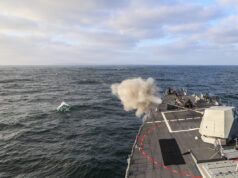
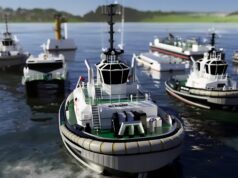
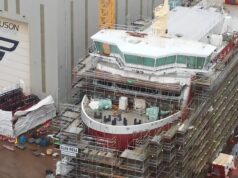
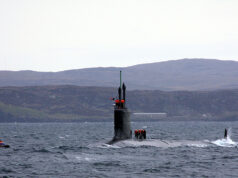
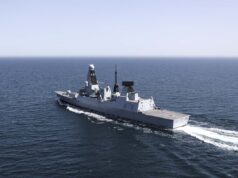

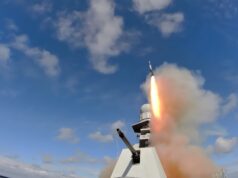
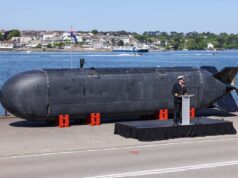
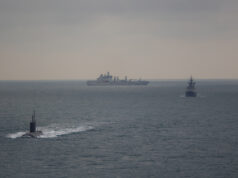
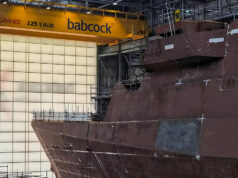

Every time a minister says the line ‘systems of systems’ a little bit of me dies on the inside. All I can think of is it being a fancy phrase the treasury have pulled out in order to cheap out on the actual warships.
Never seen so many big words, project names, meetings and bugger all else come out the CDS mouth and the MODs, endless warm words, hot air and shite. Talking up lots nothing and doing nothing, but making out so much is going on. If it words and service deals and maint contracts then the MOD has it covered. As for new orders none, nothing just made in service dates for things which already over due, delayed and over cost.
Come back in 2030 every thing will be fully working, in service. Until then its fingers crossed no one starts a war and if do in 2030 hopefully we will not loose any tanks etc as we have only 148 and no spares to replace combat losses.
The command what ever paper due out which may show what we might be ordering will be a farce a total and utter farce, Playing at world power on shoe string budget. hoping bluff and big talk will work.
Totally agree, spin doesn’t win wars (or deters them), boots on the ground, the right equipment and the will to succeed not forgetting of course the manufacturing base.
We are lacking all of it at the moment. Scarey times indeed.
agreed, its a worrying time of not a lot going on in order equipment front,
From the images I’ve seen from DSEI 25, I think MBDA are gunning to equip the future destroyer concept with the three CAMM variants and the Aster-30 B1NT, all within the Mk41 VLS.
Interesting that the minister mentions that the FADS will be capable ‘against the toughest of threats in the air and space domain’. As of today, the only missile available to fill that ‘space domain’ is the American SM-3. MBDA’s Aquila missile, which is planned to deploy in the 2030s against ballistic and hypersonic threats, is an endoatmospheric interceptor. Either MBDA has got something else in the works, or the RN is seriously considering the SM-3, which opens the door to losing the Aster in exchange for the SM-6. Very interesting to see which way it goes.
Europe will decide it needs to defend itself from ballistic and hypersonic threats. Using simi-homing missiles like Aster and future Aquila. The USN uses complete different radar setup, X-band etc
Europe will decide, and currently, Europe is split on whether to pursue indigenous systems or to procure American. There are examples of both.
BTW, neither Aster nor Aquila are semi-active radar homing. The Aster is active-radar homing and Aquila seems to be using combined IR/radar guidance.
Perhaps MBDA really do have something lined up as a SM-style family? The Aster missile format (booster plus dart) was revolutionary in the 2000s, but maybe the same manoeuvrability can be achieved using nose mounted control jets on a slimmer and more aerodynamic body? After all, Aster’s low altitude role has largely been taken over by the CAMM family and STRATUS RS will offer some form of ‘Long range precision strike’ against air targets.
I don’t know whether MBDA UK would or could develop something like that by themselves, but given the potential for FADS to be a vast project it could be worth doing as the RN has done since Sea Slug and replace the missile with the ship.
While in-between the T45s coming back and the T83s coming next decade they could give the T31s an upgraded stronger AAW suite and even build a few more.
Arm up the manned ships first before playing with drone ships and missile barges.
Type 45s are due to retire between 2035 and 3038 (supposedly)
There comes a point of when up-arming of warships to max extent, be like having all your eggs in one basket. Not forgetting the RN will struggle to crew heavy manned vessels like A.B’s.
Either that radar dome is very light or the whole thing is top heavy.
Probably why the hull has been significantly adjusted compared to the basal Type 26.
I know it’s only an artists artist’s impression, but that is one fugly ship.
Some might say “Chunky”. BTW-What happens to the three unmanned if the mummy ship is destroyed?
I assume control is handed off to another manned ship in the group. If there are none, they’d probably be able to receive commands from other sources.
Morning leh. Despite the miracles of modern tech I still feel uncomfortable about the limits of unmanned surface vessels even if there is a PLan B. I would assume that mother ship really needs to be close by to make old fashioned visual and situational decisions. The ultimate end to the way things are heading might surely end as unmanned opposing fleets fighting to the death with humans just as spectators in gigantic computer games.
That’s not the half of it. Who does maintenance on the unmanned ships? Who fixes things when they break? If they sustain damage are they just left to sink from minimal damage with no damage control? If theyre to have the same endurance as the base vessel they’re going to need large supplies of fuel and be big vessels, then they’re going to need to defend themselves. The RN has a hard enough time keeping it’s ships at sea with crews repairing them. I’m really not convinced that unmanned ships will be able to play a role in a navy significantly away from home bases. (Clearly small USVs have been great in Ukraine close to bases with limited deployment distances and essentially disposable)
Please tell me we won’t be getting this design ?
Looks like an 80’s re-hash with little in the way of 2030’s cutting edge.
A mis match of old school with bad proportions and that great big lump on top.
Pass the crayons, let me have a go.
So as with humans especially us lads, looks really matter!!
Damn – she ugly.
How quickly the type 83 (8x supposedly signifying a cruiser with all round capability in AAW, ASW etc. has already been downgraded to essentially a type 46 air defence ship.
From what I understand that is BAE’s proposal for an air warfare command ship and not a proposal for Type 83 which they do have a cruiser looking design for.
I am not really sure about this. The T83 is or is meant to be a combat ship which would have anything up to 128 Mk41 cells. That is going to be one big ship of about 160m in length and 10-12,000 tons. Her radar suite will be comprehensive. Yet lets look at the concept of this system of systems, first the radar suite would need to put a 400 mile dome over the fleet, thats one big radar system but possible to do on a 12,000 ton vessels.
It is the communications and computer power that is going to be needed for this system of systems approach. Broadcast communications will not be possible as that will tell everybody where you are so you need direct line of sight. This could be done using open air laser however for that you need several postions, so if you have six surface drones per T83, another T83 in the fleet, three or four frigates and a carrier; as well as a F35 strike package, a SSN and sat systems. You will need to become a communication node for up to 20-60 end points (end points being the end user, the other ships aircraft etc that the node is communicationg with). This must also be done in real time which means high speed and high band width. At the moment open air fibre can transmit about 2.5G. Also the T83 needs to have a combat centre able to manage all the incoming data for the ship to be able to control all of the fleets weapons. Also each T83 would need to be able to take over the full fleet communication nodal network if one fails.
This would mean that the T83 would become one big floating computer with a lot of communication/computer engineers.
This seems to me to be more akin to the US Navy’s Command Ships such as the USS Blue Ridge/ USS Mount Whitney. With that being the case we missed an opportunity with HMS Albion and Bulwark. We could have rebuilt these ships with improved SAMPSON etc and tested the communication node network. Her vehicle decks could have been converted to a communication/computer farm and her flight deck/well deck used for RUAVs/ UUVs/USVs etc.
I am noticing the use of a communication mesh which would be the best way to go, but that only works if all points of the network has the same communication capability. So for high level data communications (the battle scape) a node is needed at lower level a mesh could be used.
With broadcast comms it is simple but everyone can hear you.
Sorry open air laser, not open air fibre
So, any more information on aster and mk41 integration? I was made aware that this was possibly happening FROM DSEI2025, but nothing was released.
It was less that the integration was confirmed, and more that MBDA and the RN clearly expect it to happen in the future. The RN are planning to have both the Mk41 and the Aster, whilst MBDA has repeatedly shown the Aster and the Mk41 together.
There’s still more than a decade before these ships enter service as well.
Thanks. I was hoping that they would offer Denmark and Sweden the Type 31 with Aster and Mk 41 integration. I guess that won’t be happening.
Same here. just put Aster in mk41 already and you might sell a few.
I know really Aster missiles
where fully-homing, I just mixed up some of the SM series missiles up.with non-homing missile fully reliant on radar for guidance. Are any still in operation?